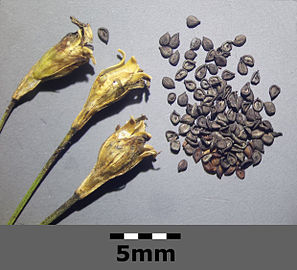| Petrorhagia saxifraga | |
|---|---|

| |
| Scientific classification | |
| Kingdom: | Plantae |
| Clade: | Tracheophytes |
| Clade: | Angiosperms |
| Clade: | Eudicots |
| Order: | Caryophyllales |
| Family: | Caryophyllaceae |
| Genus: | Petrorhagia |
| Species: | P. saxifraga
|
| Binomial name | |
| Petrorhagia saxifraga | |
| Synonyms[1] | |
|
List
| |
Petrorhagia saxifraga, known as tunic flower or coat flower, is a small, herbaceous flowering plant in the family Caryophyllaceae.[1][2] It is native to parts of Europe and introduced to the United States and Canada, Great Britain, and Sweden.[1][2] Petrorhagia saxifraga is also known as tunic saxifrage, pink saxifrage, or just pink.[3][4]
It is a wiry plant with numerous branching stems, narrow leaves, and flowers growing solitary at the ends of branches. The petals range from pink to white.[5] It is commonly cultivated in rock gardens and used along borders, escaping to grow in lawns, along roadsides, along shorelines, and in other sandy disturbed areas.[2][4][6]
Tunic flower was originally described as Dianthus saxifragus by Carl Linnaeus in 1753 and renamed Petrorhagia saxifraga in 1831.[7][8] The genus and species name refer to its natural habitat: rock crevices.[3] Two subspecies are accepted:
- Petrorhagia saxifraga subsp. gasparrinii (Guss.) Pignatti ex Greuter & Burdet
- Petrorhagia saxifraga subsp. saxifraga (L.) Link
- ^ a b c d Cite error: The named reference
powowas invoked but never defined (see the help page). - ^ a b c Cite error: The named reference
fnawas invoked but never defined (see the help page). - ^ a b Cite error: The named reference
pfwas invoked but never defined (see the help page). - ^ a b Cite error: The named reference
miflorawas invoked but never defined (see the help page). - ^ Cite error: The named reference
fotcr2017was invoked but never defined (see the help page). - ^ Cite error: The named reference
fnasubspwas invoked but never defined (see the help page). - ^ Cite error: The named reference
ipni1was invoked but never defined (see the help page). - ^ Cite error: The named reference
ipni2was invoked but never defined (see the help page).


